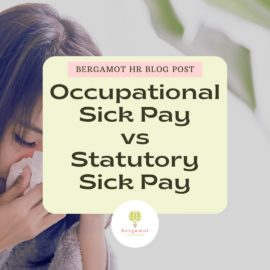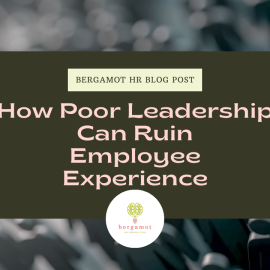
Managing Maternity
“I’m pregnant” 🤰
I’m not (I’m sticking to dogs). I’m just quoting the words that many employers hear from one or more of their employees at some point.
It’s an incredibly exciting and happy time for the parents to be. And I’m sure anyone who knows them, including their employer, will be very pleased for them on a personal level.
However, news of a pregnancy can be a little daunting, particularly for a small business that rarely, if ever has needed to support an employee through maternity.
First and foremost, acknowledge the news and offer your congratulations. Then, if you are not sure what happens next, get in touch. I can help you support your employee and comply with employment legislation.
There are rules and regulations to comply with to protect you and your employee, and I have briefly summarised some of them. This is not an exhaustive list, but will give you some insight into what you and your managers need to know and do.
10 Facts About Maternity For Employers

Statutory Maternity Leave (SML)
In the UK, pregnant employees are entitled to up to 52 weeks of Statutory Maternity Leave. This is divided into 26 weeks of Ordinary Maternity Leave and an additional 26 weeks of Additional Maternity Leave.
Statutory Maternity Pay (SMP)
Eligible employees can receive SMP for up to 39 weeks, which is paid at 90% of their average weekly earnings for the first six weeks, followed by £184.03 or 90% of their average weekly earnings (whichever is lower) for the remaining 33 weeks
Employment Rights
During maternity leave, employees’ contracts continue with the exception of remuneration. Employees retain the right to receive benefits, accrue holiday, and return to work under their contract’s terms
Health & Safety
Employers should conduct a risk assessment to ensure a pregnant employee’s safety at work. If risks are identified, reasonable adjustments should be made. If no safe adjustments can be made, the employee may be suspended on full pay
Antenatal Care
Pregnant employees have the right to paid time off for antenatal care, which includes medical appointments and, if recommended by a doctor or midwife, parenting classes
Compulsory Leave
After childbirth, employees must take a minimum of two weeks off (four weeks for factory workers) as compulsory maternity leave
Keeping In Touch Days
Employees can work up to 10 days during their maternity or adoption leave. These days are called ‘keeping in touch days’. Keeping in touch days are optional – both the employee and employer need to agree to them.
Protection Against Discrimination
It is unlawful to discriminate against an employee because of pregnancy or maternity. This includes protection against unfair treatment, discrimination, or dismissal
Redundancy Protection
If an employee is made redundant while on maternity leave, they have the right to be offered any suitable alternative vacancy with the employer, if one is available. The right lasts for 18 months from the date the child is born or adopted and continues when the employee returns to work.
Return To Work
After maternity leave, employees have the right to return to their job. If it’s not practicable for the employer to offer the original job, a suitable alternative must be provided
If you need help with the steps you need to take, how to stay compliant, and also create an excellent employee experience for your people, get in touch!





